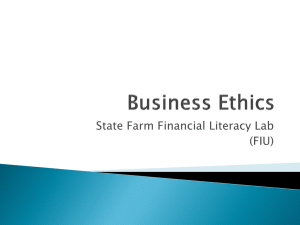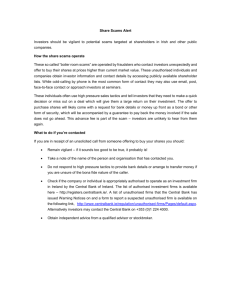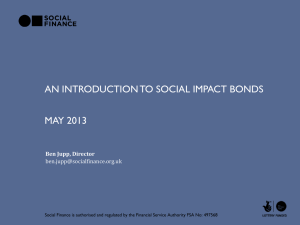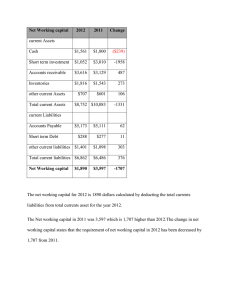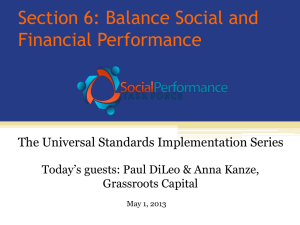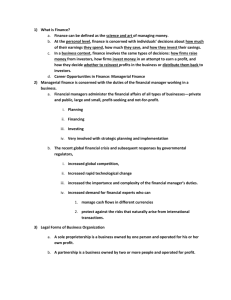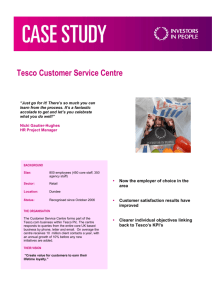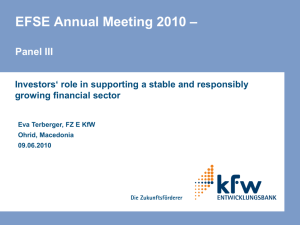The Shareholder Value Model (the Standard view in Corporate
advertisement
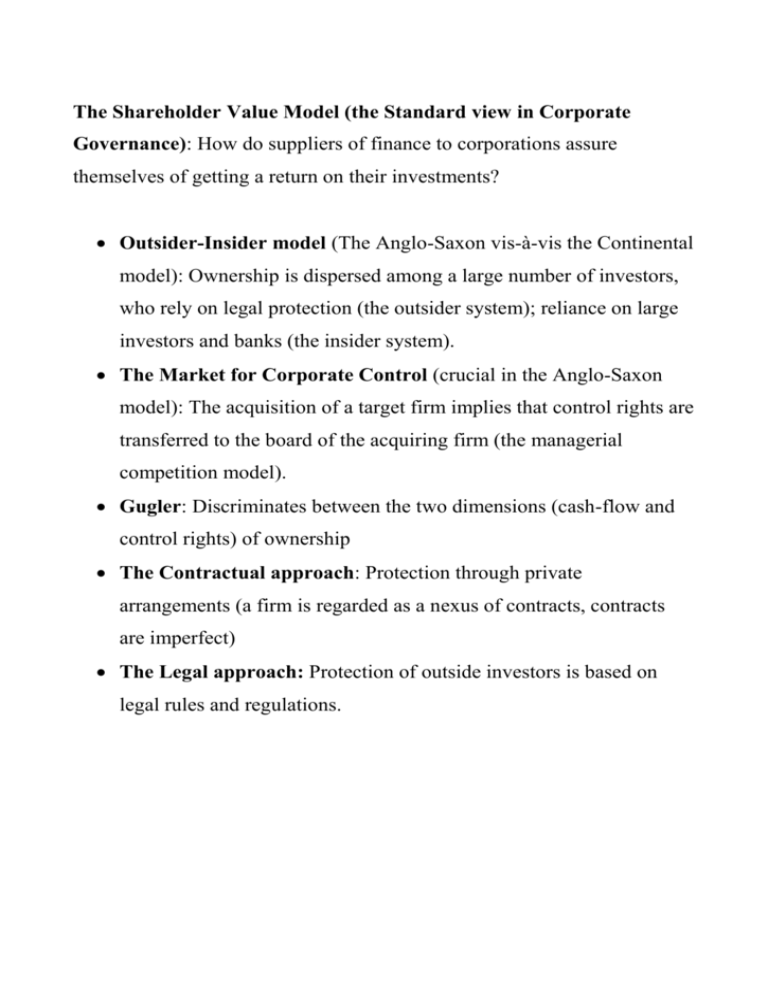
The Shareholder Value Model (the Standard view in Corporate Governance): How do suppliers of finance to corporations assure themselves of getting a return on their investments? Outsider-Insider model (The Anglo-Saxon vis-à-vis the Continental model): Ownership is dispersed among a large number of investors, who rely on legal protection (the outsider system); reliance on large investors and banks (the insider system). The Market for Corporate Control (crucial in the Anglo-Saxon model): The acquisition of a target firm implies that control rights are transferred to the board of the acquiring firm (the managerial competition model). Gugler: Discriminates between the two dimensions (cash-flow and control rights) of ownership The Contractual approach: Protection through private arrangements (a firm is regarded as a nexus of contracts, contracts are imperfect) The Legal approach: Protection of outside investors is based on legal rules and regulations. The prime aim: make you acquainted to the criticism of the shareholder model in corporate governance prepare you to alternative views of corporate control discussed in the third section. Objections against the shareholder value perspective 1. US and UK worldview (“outsider model”), while most firms in the world have one dominant blockholder 2. EU concerns about an efficient and competitive business enterprise 3. Interests of non-investing parties should be better represented 4. The nature of the firm has changed Corporate Control Control Residual Ownership Residual rights through control (cash-flow to control given debt moves to rights) to: management assigned to: Modern Yes Yes Investors Investors Corporation New Disfavoured Moves away Enterprise from top Investors or Third parties, employees managers external investors or employees (German codetermination) Tirole´s Stakeholder model: 1. Contractual perspective on firms 2. Incentive systems to discipline managements 3. Shared or undivided control? Implicit incentives: stem from an economic agent’s desire to signal characteristics to his or her labour market. The “labour market”: all those people, who take actions that impact on the agent’s benefits These actions reflect people’s beliefs about the characteristics of the agent. Partnership the general partners both own and exercise management the partners cannot sell or otherwise transfer their ownership claims without permission of the other partners there are no markets for corporate control connected to the partnership form when borrowing money each partner is individually responsible for the entire liabilities (“passiver”) and the liability is unlimited Advantages of partnership the costs of monitoring are low. Unlimited liability encourages the partners to efficiently monitoring the business operations. in service businesses only the employees themselves have the qualifications and information necessary to manage specialized knowledge assets (tacit knowledge embedded in people) human capital often not tradable (limitations on intellectual property) Solution to the problem with costs of collective decision-making: Undivided control is combined with contractual protections for the non-controlling parties: 1. limitations on actions that are expected to create strong externalities for other stakeholders. 2. exit options (workers, who become unemployed when a company closes down, have right to general training, retirement etc.)










